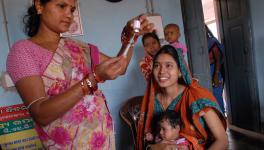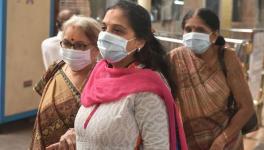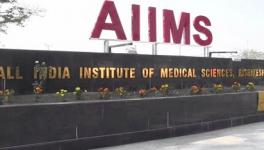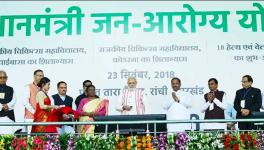‘Healers or Predators’ – Excerpts
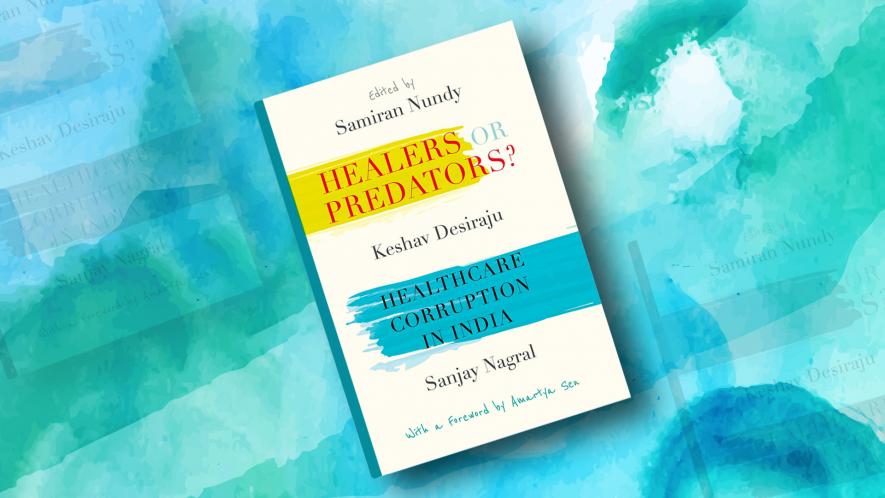
In this collection of well-researched essays on the state of healthcare in India, the editors (Samiran Nundy, Keshav Desiraju, and Sanjay Nagral) have off ered us a timely opportunity to understand how badly things have gone wrong in our beloved country. They have also offered illuminating analyses of the causes and remedies of the observed failures.
Foreword by Amartya Sen
Despite being one of the fastest growing economies in the world, India ranks among the poorest achievers of good health. The shortfall of India’s health achievements compared with those of, say, China or Thailand (in terms of expanding longevity, reducing infant and maternal mortality, curbing child undernourishment, eliminating health-cost-induced indigence, and other indicators) is large and has been growing larger. Even within South Asia, Bangladesh and Nepal have overtaken India in health accomplishment, including in life expectancy. If India’s bad record in healthcare is not much discussed in the Indian press, this neglect does not indicate the presence of a tolerable level of healthcare in India, but reflects instead the narrow reach of the Indian news media, with its traditional neglect of elementary education and healthcare. That neglect is, in fact, a contributory factor to the continuation of India’s health failure and bad schooling for the population at large, since public discussion is one of the essential requirements for remedying policy failures. Public discussion is particularly important for policy making in a functioning democracy, and it is remarkable that in the public discussion preceding political elections (such as the Indian general elections of 2014), healthcare tends to get extraordinary little attention…
…What explains India’s healthcare debacle? One immediate account is readily available, but we must be careful not to see more explanation there than a deeper scrutiny can confirm. India spends a much lower proportion of its national income on healthcare than do many other nations with comparable achievements in economic development. Seen on its own, this line of explanation is certainly important. The fact that India allocates only a little over 1 per cent of its gross domestic product on public healthcare contrasts sharply, for example, with nearly three times as much by China. We reap as we sow, and cannot expect to get what other countries achieve by allocating much more resources—as a proportion of their respective levels of the gross national product—to healthcare.
There is clearly some truth in seeing India’s healthcare failure in this perspective, but the story is much bigger than that. The low allocation of public resources to healthcare is merely one of the relevant factors, and important as it is as an account of what ails India’s healthcare, the neglect of resource commitment probably hides as much as it reveals. As the studies included in this important collection bring out, India’s healthcare failure is far more extensive than the resource story alone can capture. The entire organization of Indian healthcare has become deeply flawed in nearly every respect. The story that emerges from these carefully researched studies is that of a comprehensive healthcare crisis. The editors go further than that, and see in these failures a picture of ‘healthcare corruption’, which is a more disparaging diagnosis. Corruption is a charge that must not be made lightly. But, alas, these studies bring out why this disheartening depiction is basically correct. In the many-sided failures of Indian healthcare arrangements, the cupidity and greed of the agents involved—at different levels—play a distressingly important role.
There is, to start with, the reflection of a pervasive failure in the widely observed fact that the poor find it difficult, if not impossible, to make use even of those services that are actually available, or can be easily mobilized. Private caregivers will not budge without the promise of payment, and even though some xi public services are offered freely, many critically important services are denied unless the patient is willing—and able—to offer the demanded sums, which can be unaffordably large for the underprivileged Indians.
There are many other failures to which these studies draw attention. Medicine is often hard to get, and spurious drugs are too readily churned out by manufacturers and distributers. That story of culpability frequently extends to medical equipment and implements.
Regulations to restrain pilferage and enforce accountability are recognized as important (as they should be), but are often successfully circumvented, yielding a financial bonanza for the violators. Laws governing clinical establishments, which exist in theory, remain quite largely unimplemented.
Even at the very top of the operations, the MCI has had what the editors call a ‘long and blemished history’. In addition to the duties of supervision and coordination of medical services that the Council is meant to do, but fails to perform, it also has a bad record in its designated role of looking after medical colleges (of which there are nearly five hundred across India). In particular, in the use of the power—and responsibility—to set up new private medical colleges, there seems to be clear evidence of fairly straightforward corruption…
…I end this foreword by pointing to three general failures in healthcare in India which may need particular attention. The first is the amazing neglect of primary healthcare compared with health interventions needed at later stages. There is certainly more money to be made in later interventions compared with simple preventive care and elementary outpatient attention. In the allocation of health resources, there is a massive neglect of primary healthcare, reflecting an inability to understand the critically important role of universal healthcare at the primary level, on which the entire healthcare system has to depend…
…A second general problem to highlight is India’s hasty and premature reliance on private healthcare, which goes hand in hand with neglect of public healthcare. The alleged superiority of market-based healthcare is often invoked without adequate critical scrutiny. Health is a very special commodity, in the delivery of which the effi ciency of the usual market relationships tends to fl ounder. When you or I buy a toothbrush, we know what that commodity does and how it can help us. For a seeker of healthcare, however, the patient may have far too little knowledge about what the ailment is and what the doctor can—or cannot—do to combat it. The informational lacuna in general and the asymmetric information—between the buyers and the sellers—in the market for healthcare provide a rich arena for abuse and exploitation.
Further, when you buy a toothbrush, you need be concerned only with what it will do for you. In contrast, for healthcare—and the eradication of disease (including communicable disease)—that we seek for ourselves is important not only for us, but also for others as well. What economists call ‘externalities’—and ‘public goods’—mess up the efficiency aspects of market-based allocation.
The usual discipline of market incentives goes extensively wrong in the market for healthcare both because of externalities and asymmetric information, as Paul Samuelson and Kenneth Arrow—two of the world leaders of the study of market economics—showed many decades ago. Health demands a kind of trust relation, and as Arrow put it in an article on healthcare in 1963, ‘the very term “profit” … denies the trust relations’. Third, as was briefly noted earlier, informed public discussion on healthcare, which is central to policy making, is peculiarly deficient in India. The dysfunctional and exploitative nature of healthcare in India survive and flourish partly as a result of the lack of public discussion—and exposure—of the nature and extent of the failings involved. If the silence on the extensive debasement of Indian healthcare is a major cause of the persistence of the terrible deficiencies, the remedy has to depend on enlightening investigations of what has gone wrong—and why. This splendid, if depressing, book will do a lot to remedy that momentous neglect. We have excellent reasons to be grateful to the authors and editors of this important collection of investigative studies.
Introduction by Samiran Nundy, Keshav Desiraji, and Sanjay Nagral
A nation’s capacity to deliver basic healthcare is perhaps one of the best markers of its concern and responsibility for its citizens. However, as Kavita Narayan, one of the contributors to this volume, states in the opening sentence of her chapter: India’s healthcare system is broken. Only a few years ago we read the heartbreaking story of a father and mother committing suicide in the nation’s capital. They had lost their young son to dengue after being denied admission to multiple hospitals. In August 2016, we also witnessed the sordid spectacle of a poor man in Odisha carrying the body of his dead wife home because the hospital refused to provide an ambulance. A year later, in August 2017, shortage of oxygen supply resulted in the deaths of a considerable number of infants in a hospital in Gorakhpur in Uttar Pradesh. Newspapers as well as television carry almost daily reports of medical negligence, overcharging, and substandard care. We read reports of the widespread production of spurious drugs by pharmaceutical companies as well the bribery of doctors with trips to foreign countries and other sundry pleasures. There are also drug procurement scams, underhand commissions, and a widespread racket in medical college admissions. Possibly as a consequence of the increasing distrust in the system, there are many more reports of physical violence against healthcare providers. And even the dry, objective statistics of health indicators, which are some of the worst in the world, essentially convey the same message of the abject failure of our healthcare delivery.
To us the various episodes of denial of basic healthcare are symptomatic of a deep-rooted crisis, and at a time when the trust deficit between healthcare and ordinary citizens is at an all-time low, it is crucial to go beyond the headlines and dispassionately analyse one of the key drivers of the problem—healthcare corruption. Whilst it may be true that the infrastructure is weak, and possibly under-funded, the additional corrosion caused by corruption has aggravated matters. Hence this book.
Corruption has occupied centre stage in Indian politics for some time now, even making and breaking governments. Corruption in healthcare is also beginning to receive attention in the public sphere. Most of the discussion, however, has been superficial and confined to elaboration, moral outrage, and lament. There has been the simplistic explanation that healthcare corruption is just a reflection of the values of the rest of society. There has also been a tendency of the various players to shift the blame to one another. This book attempts to unpeel the multiple layers that contribute to this phenomenon and join the dots to structural and systemic problems. By doing so we also hope to suggest solutions beyond the traditional paradigms.
India is committed to achieving universal healthcare. This is not a particularly recent commitment. The globally adopted declaration of Alma Ata in 1978 recognized the fundamental importance of universal primary healthcare. Successive resolutions of the World Health Organization have reiterated this commitment. The current Director General of the WHO, Tedros Ghebreyesus, in one of his first public statements, was clear in his call: ‘All roads should lead to universal health coverage.’1
It is a truism that universal care will not become a reality unless a well-regulated, transparent, and functioning system is in place. This is, of course, in addition to adequate financial resources and well-trained health human resources at every level. Over the 70 years since Independence, India has established the systems needed, but it is now increasingly realized that paralysing corruption has crippled many of the regulatory agencies, many of the systems, and a substantial part of the practice of the medical xvii profession. This book arises from a conviction that the nature and history of healthcare corruption needs to be well understood if indeed any improvement or reform is to be realized and if we as a country are likely to move towards universal healthcare.
The contributors to this volume are seasoned practitioners, teachers, and researchers, and also include many practicing physicians and surgeons. Theirs is the voice of experience. We have also been fortunate in securing brief accounts from persons who, despite apathy and corruption, have been able, in their particular spaces and disciplines, to make a difference…
…A linked issue, which has not been covered in this book in any detail, is the history in the current implementation of health insurance schemes. The general conclusion appears to be that by offering insurance cover only to indoor admission and not for outdoor consultation, the net result has been both that useless surgical interventions are being performed and that out-of-pocket expenditure has increased even more, to say nothing of the accompanying corruption in all these transactions.
This one answer, at least, is clear. Governments at both centre and state levels, must continue to be the primary player in healthcare, and certainly in primary healthcare. The specious difference between providing and purchasing care must be called out. Even if government were to purchase the services, it must still provide those services to the people at little or no cost.
Another major conclusion we can draw is that there is a great deal which the private or non-governmental sector can and must do. The great healing traditions of institutions such as the CMC, MGIMS, and St. Johns and the highly professional healthcare delivery through organizations such as the JSS in Chattisgarh or The Banyan in Chennai, to mention only two organizations named in this book, deliver a powerful message that non-governmental, civil society activism, built on a platform of hard professionalism, have a role to play in healthcare delivery which government, at least in the immediate future, will not be in a position to play…
…A third broad lesson is that information is power and the access to information determines the quality of treatment a patient receives. For all India’s remarkable achievements in the sphere of information technology, communication, and digital applications, access to these technologies is limited. Owning a mobile phone, if a significant marker of social status, does not reflect any great access to all that technology has to offer. That is still the preserve of persons who have had much more than an average level of education. In a deeply divided society, access to technology has become yet another dividing factor, and one which leads to corruption.
Another important message is that no system of healthcare delivery, whether public or private, can function in the absence of enlightened regulation. Enough has been said of the state of the MCI; less is known, at least publicly, of the Nursing and Dental Councils and even less on the regulatory agencies in the AYUSH sector. It would be fair to note, given human nature, that their xxvii situation is not noticeably better. There is no regulation of any sort over the entire range of allied health-related training. This cannot, however, be an argument against regulation and we await the progress of the discussions on the National Medical Commission.
A linked aspect, and which in its own way leads to poor service outcomes, is the need for a comprehensive overview of the medical curriculum and syllabus. There is very little research of any standard being undertaken in many medical colleges or universities. Several private medical colleges do not have the patient load to sustain systematic teaching. It is an open secret that undergraduate medical education in India does nothing to promote public healthcare delivery. Even more dangerously, the pronounced tendency at the postgraduate level, and especially in high capitation fee charging private colleges, is to concentrate only on the allegedly lucrative specializations such as radiology, obstetrics and gynaecology, and orthopaedics. Across India, there are only a very few seats in medical colleges, and these are almost entirely in government medical colleges, in such much–needed disciplines as psychiatry, family medicine, palliative care, and geriatric care. As long as shortages remain in these areas, there will be exploitation and corruption…
…There is, however, one question to which there does not seem to be a ready or an easy answer. Why is it that so many distinguished practitioners appear to believe that the heart of their profession has been lost? India is a traditional society where persons of learning, teachers, preceptors, and healers are given respect, as something which is their right and their due. There are indeed a very large number of doctors in government hospitals and health centres, in private hospitals and clinics, and in public and private medical colleges who remain true to their calling; but there is enough evidence to suggest that human nature is frail. It is by no means the case that it is only the medical profession that has been so affected. The civil services, the world of universities and higher education, the world of lawyers and the courts, the world of politics and public representation, all have been so affected, but healthcare is a critical and universal need. It is our hope in pursuing our idea of this book to focus attention on the malady which seeks to destroy from within; it is our further hope that through discussion and introspection, we will learn to improve our policies, programmes, and practices.
Get the latest reports & analysis with people's perspective on Protests, movements & deep analytical videos, discussions of the current affairs in your Telegram app. Subscribe to NewsClick's Telegram channel & get Real-Time updates on stories, as they get published on our website.











